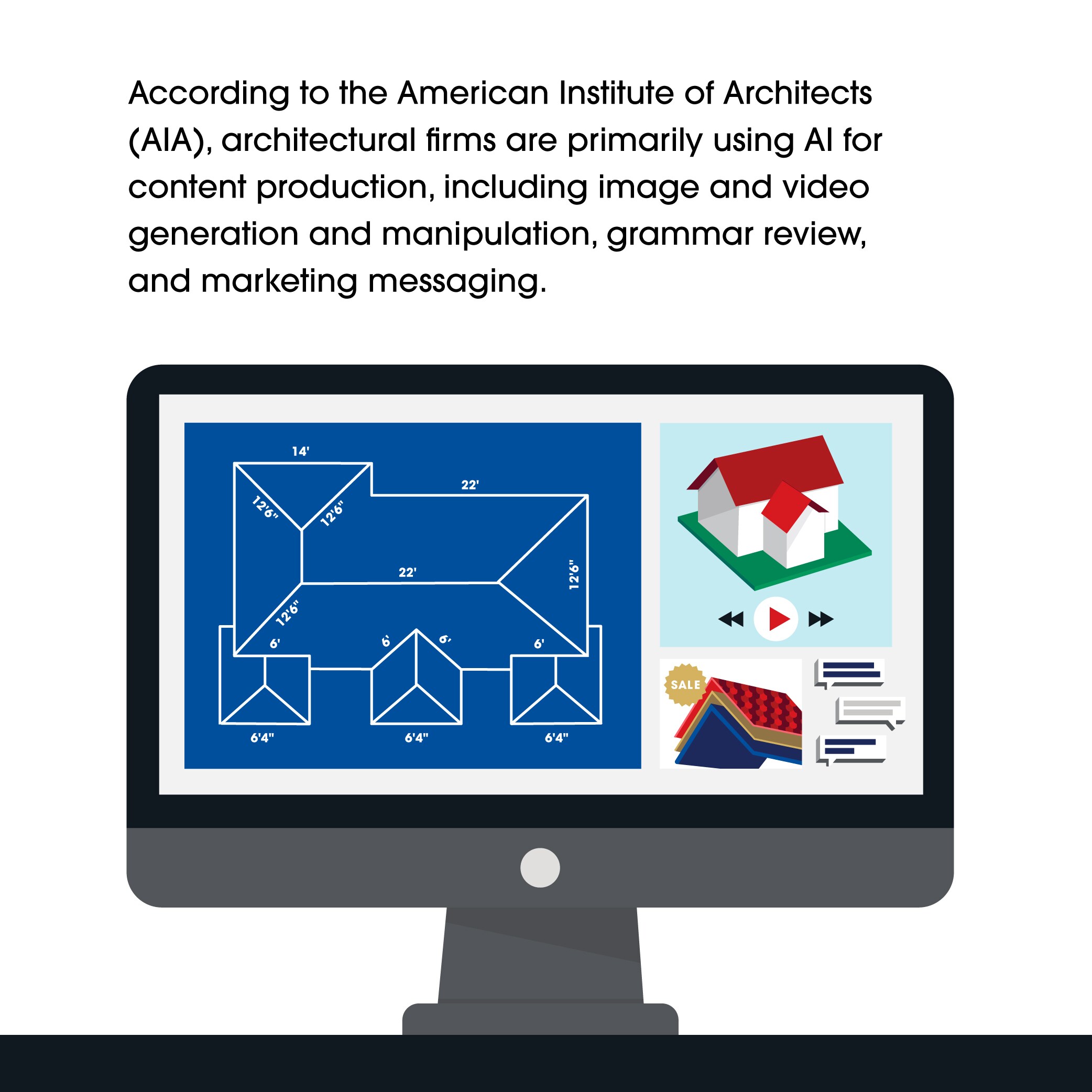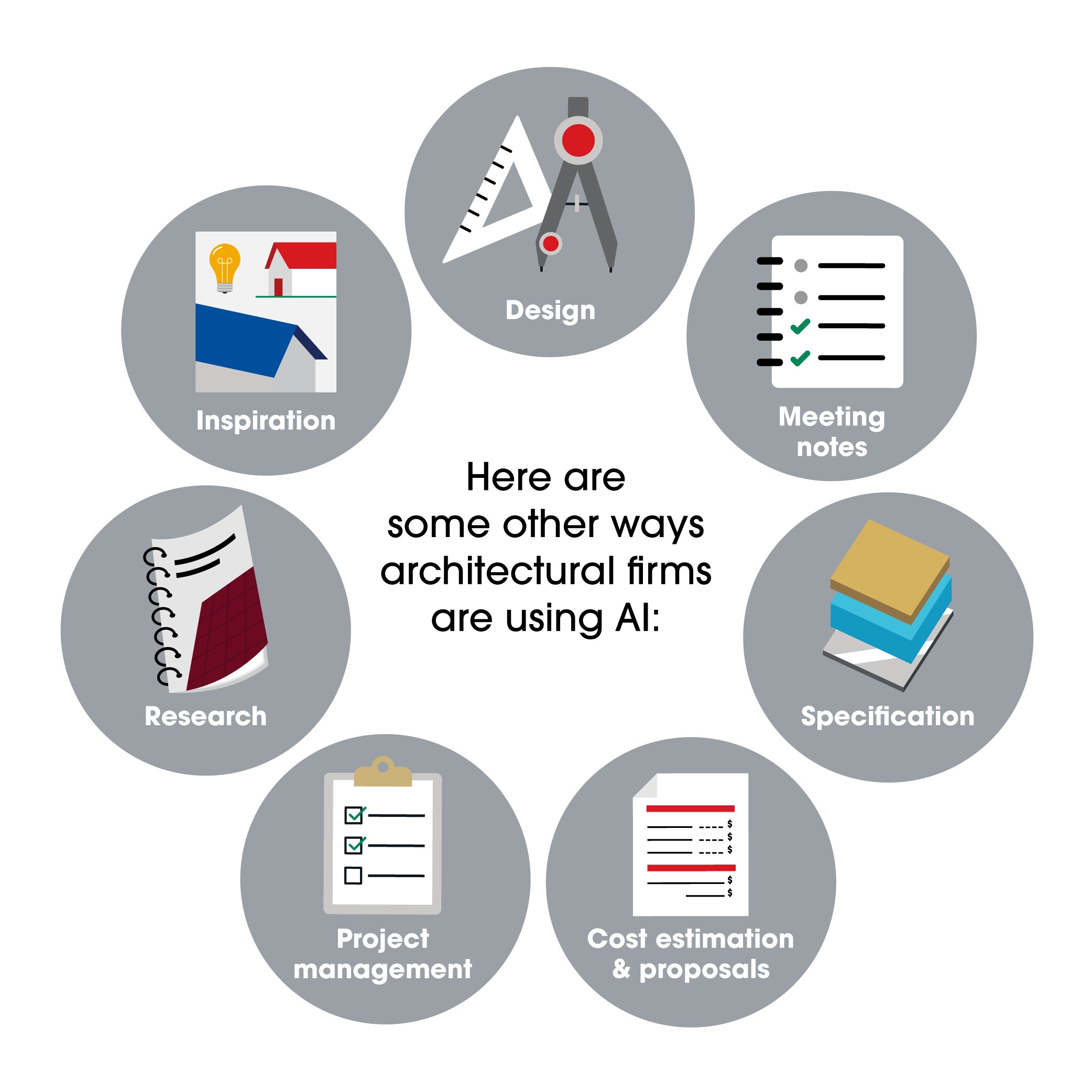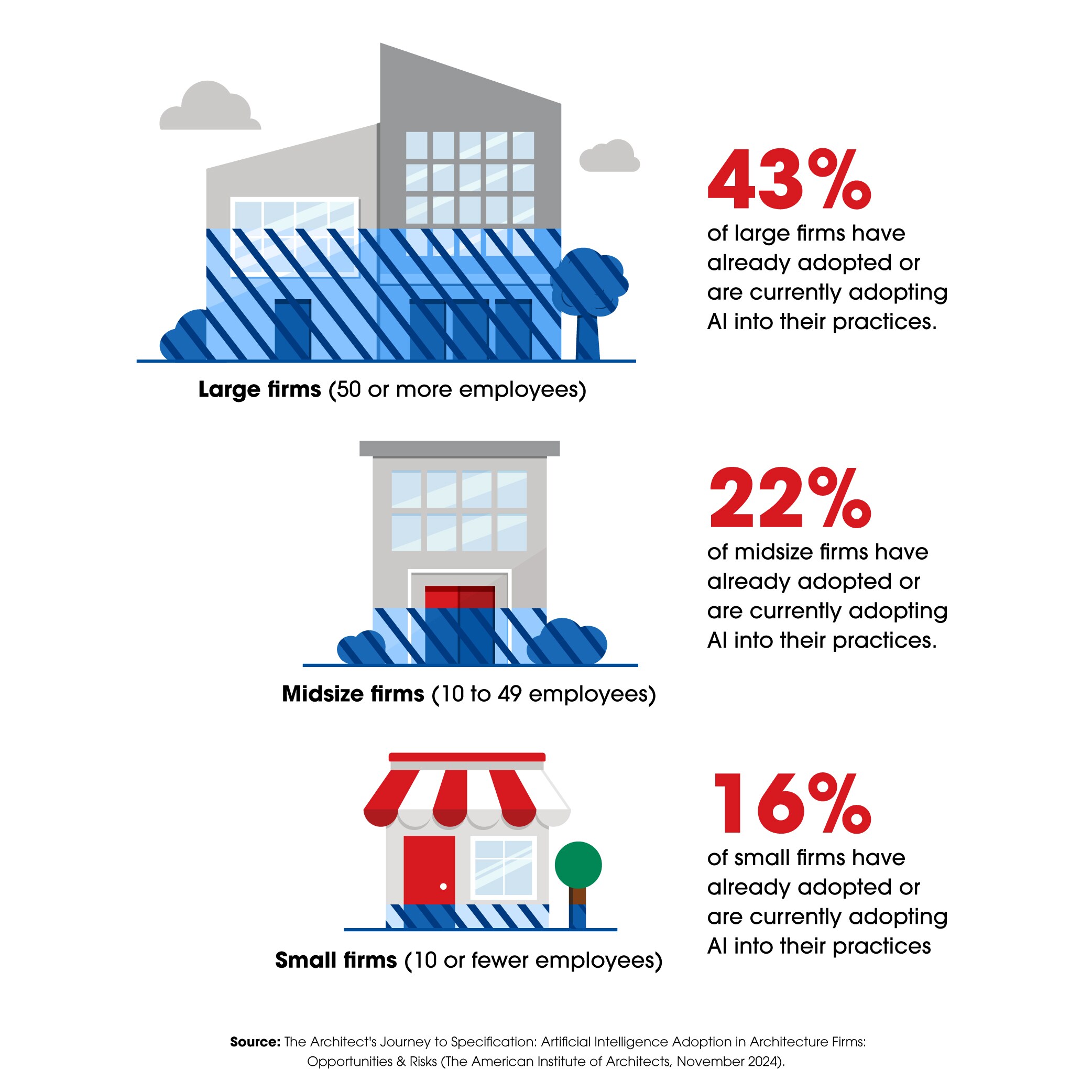For centuries, architects led the way in technological innovations that influenced how buildings were designed and constructed. However, in the latter two decades of the twentieth century, advances in computer science necessitated changes to the practice of architecture and the way 3D space was designed and visualized.
After generations of drafting by hand, architects in the 1980s adopted computer-aided design and drafting (CADD), which redefined the speed with which architectural representation, revisions, and iterations could be managed. Quickly thereafter, the industry was introduced to Building Information Modeling (BIM), an integrated 3D platform now widespread among architects, engineers, and building contractors. This revolutionized the way architects could think about space, material, and construction drawings simultaneously.
Artificial intelligence (AI) is the latest and most pervasive iteration of technological advancement. While AI in architecture has the potential to redefine the profession, architects have been mostly measured in their approach to adopting it, remaining critical of which processes within a design firm require this type of automation. Research conducted by the American Institute of Architects (AIA)1 provides valuable insights into the current state of AI in architecture, spotlighting the opportunities and challenges of this transformative and rapidly evolving technology.
Practical Implications: Opportunities and Challenges
Of the architectural firms that see AI as a tool to boost efficiency and productivity, the work processes cited as examples in the AIA research include:
- Automating manual tasks
- Streamlining research into new products and construction methods
- Maintaining product libraries
- Drawing coordination
- Generating project specifications
- Estimating costs
- Optimizing BIM processes
- Energy modeling
As more AI programs become available to meet the profession's unique needs, architectural firms anticipate increased use of AI to augment conceptual design and planning, 3D modeling, content generation, and project management.
While many in the profession are optimistic about the promise of AI in architecture, they also have serious concerns about the following issues:
- Output inaccuracies: Inclusion of mistakes or misleading information in the end product.
- Unclear future: Unintended or unforeseen consequences.
- Privacy and security: Data security and privacy breaches of client data.
- Authenticity: Differentiation of AI-generated versus human-generated content.
- Transparency: Lack of understanding of AI models' decision-making processes.
- Regulatory compliance: Exclusion of critical code/regulatory requirements as well as ethical considerations during the design process.
- Algorithmic bias: Perpetuation of stereotypes or discrimination due to biased data.
- Job displacement: The possibility of jobs being eliminated or replaced by AI.
Interestingly, younger architects (under age 50) are the most concerned about the use of AI in architecture. This is likely because they have more direct experience with AI and are thus more aware of its pitfalls. In addition, their future career timelines will be more impacted by its use. In general, architects are intentional about maintaining creative control of their work, using AI to augment rather than automate the creative aspects of professional practice.
Adoption of AI in Architecture
Although most architects are intrigued by the possibilities of AI, very few have actually integrated it into their practice. AIA research shows that 53% of surveyed architects have experimented with AI to some extent, but only 6% consistently use it for their jobs1.
In addition to adoption by individual architects, the research sheds light on AI implementation at the architectural firm level. Overall, only 28% of architectural firms have already implemented or are currently integrating AI into their practice. As is usually the case with game-changing innovations, large firms are leading the way, leveraging AI for improved workflows.
AI Adoption Motivations, Concerns, and Uses
The AI applications used by individual architects include chatbots, which are familiar to most architects under age 50, and image generators, which are more popular with architects under age 35. At the firm level, AI in architecture is used primarily for generating and manipulating images, marketing, and text/grammar analytics. Less than 15% of firms use AI programs for design and planning, and less than 10% use them for 3D modeling, content generation, and project management.
About three out of four firms that have adopted AI in architecture say their main motivation is to reduce overhead costs and boost staff productivity. Another factor, especially among larger firms, is the opportunity to be instrumental in driving innovation in the profession. Among midsize adopters, 60% reported using AI to keep up with their competition, while 39% of small firms list that as a motivating factor.
For firms that have either decided against or are not yet considering implementing AI, time constraints and concerns about accuracy, privacy, and security are among the reasons provided.


Academic Implications: Opportunities and Challenges
AI is gradually being incorporated into the curricula of a growing number of architecture schools. Joseph Choma, the Director of Florida Atlantic University's School of Architecture, believes that AI should become a mandatory part of architectural curriculum. Choma states that "AI is not a replacement for creativity but a tool that enhances it," going on to emphasize that students should be equipped with the full range of technical skills needed for future practice.
Educators are challenged, however, with presenting AI as an exciting design tool while educating students on the ethical issues of plagiarism, intellectual property, and privacy. Just as generative AI has presented challenges to educators in assessing the authenticity of student-written work, similar concerns could be an issue with AI image generation, for example. Because of these concerns, 82% of architects surveyed would like to see the development of an official charter by the AIA that would establish parameters for the responsible use of AI in architecture.
Despite their misgivings, a large majority of architects are interested in learning more about the risks and benefits of AI, exploring architecture-specific AI tools, and acquiring the training to use them. There are tremendous opportunities for the AIA and other professional organizations to offer training, help establish ethical boundaries, and lead discussions on the implications of AI in architecture.
AI Implementation by Firm Size
Here's what the AIA reveals about AI adoption based on architectural firm size:
- Large firms (50 or more employees): 43% of large firms have already adopted (13%) or are currently adopting (30%) AI into their practices.
- Midsize firms (10 to 49 employees): 22% of midsize firms have already adopted (19%) or are currently adopting (3%) AI into their practices.
- Small firms (10 or fewer employees): 16% of small firms have already adopted (6%) or are currently adopting (10%) AI into their practices.

Future Outlook
Based on insights from the AIA study, architects who are new to AI may benefit from starting gradually, using AI for tasks like library or code-related research and carefully fact-checking results before applying them directly to a project. It may be helpful to evaluate which tasks could be reasonably adapted to AI and focus on the tools available to perform specific work functions. The quality control processes that architects typically employ on any project should be adapted to any new workflows that result from the implementation of AI in architecture.
There are exciting possibilities for the future use of AI in architecture. As architects find ways to use AI effectively and ethically, it has the potential to spark creative inspiration, greatly reduce the redundancy of mundane tasks, help streamline project management, and assist in meeting sustainability goals.
If architects continue to keep an eye on developments in AI and the ways in which other architectural firms are successfully utilizing it, they will likely find opportunities to integrate it responsibly into their own practice.
Interested in exploring how innovative building solutions can complement evolving AI practices? Reach out to the GAF commercial team for more information on materials and systems that support your technological advancement.
1) American Institute of Architects, The Architect's Journey to Specification, January 29, 2025, https://www.aia.org/resource-center/the-architects-journey-to-specification
This blog contains information created by a variety of sources, including internal and third party writers. The opinions and views expressed do not necessarily represent those of GAF. The content is for informational purposes only. It is not intended to constitute financial, accounting, tax, or legal advice, or professional design advice as to any particular project. GAF does not guarantee the accuracy, reliability, and completeness of the information. In no event shall GAF be held responsible or liable for errors or omissions in the content or for the results, damages or losses caused by or in connection with the use of or reliance on the content.

